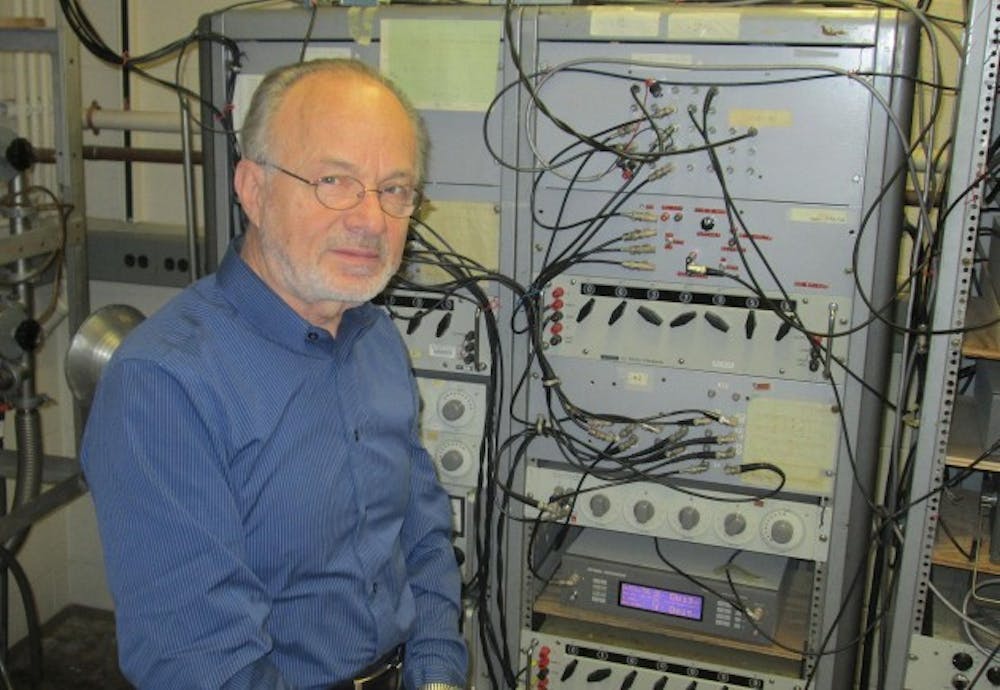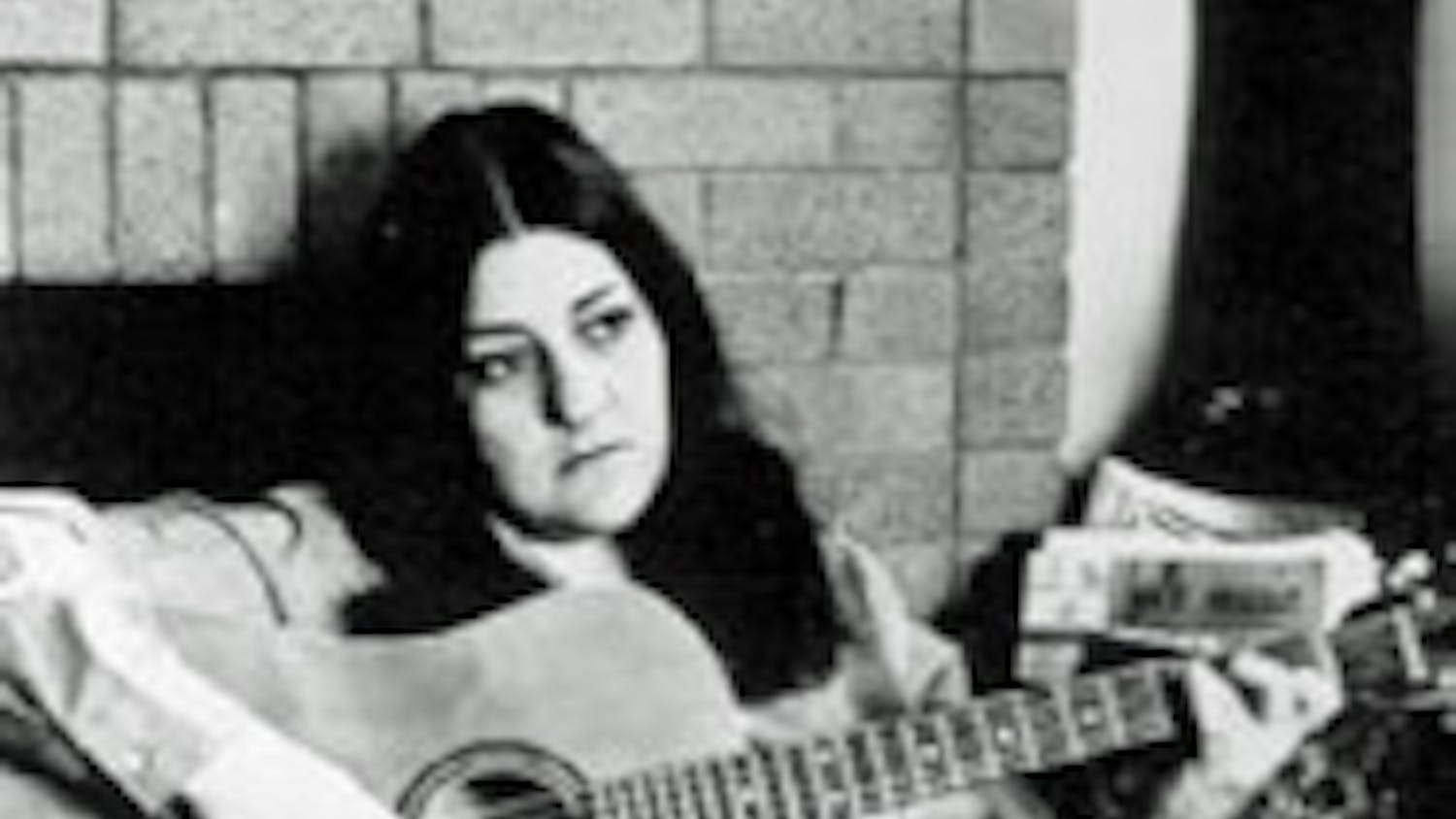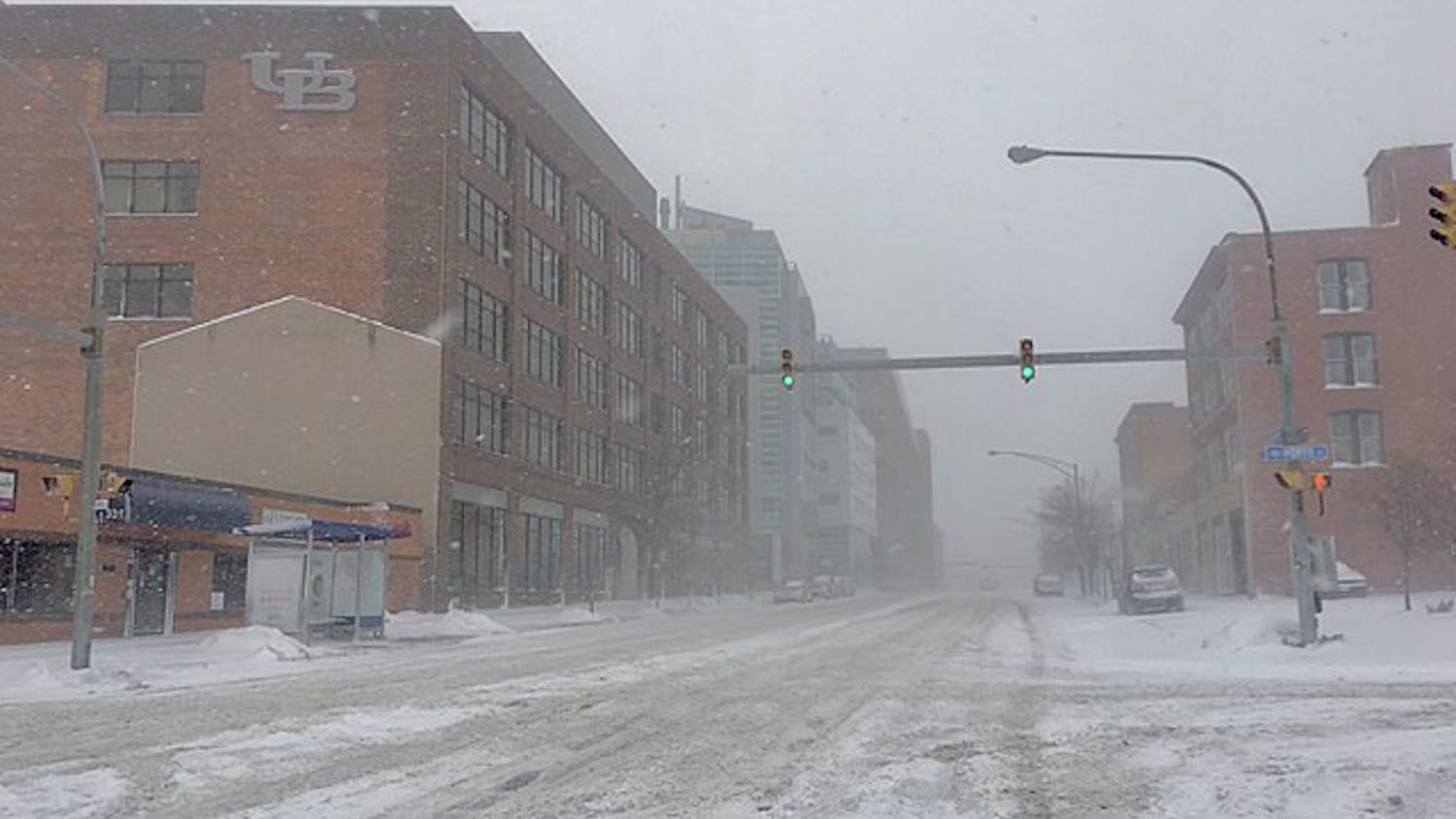Dr. Francis Gasparini sits in an office on the first floor of Fronczak Hall, surrounded by hulking silver tanks of liquid nitrogen and bulletin boards covered with published articles. His desk is neat, and his calendar is color-coded; he is organized and committed.
This physics professor, whose research is focused in the field of quantum fluids, is one of three professors at UB who has recently been named a SUNY Distinguished Professor. According to the SUNY website, the Distinguished Professorship is awarded to faculty members within the SUNY system who have been a full professor for over five years, achieved national or international prominence and a distinguished reputation within the recipient's field through significant contributions to research and scholarship.
Gasparini's research has earned him worldwide honor. He has been a fellow of the American Physical Society (APS) since 1990 - an accomplishment that recognizes the significance of his research. He has also been invited to speak at 24 national and international conferences and has given lectures at 39 universities.
Additionally, Gasparini has been a recipient of funding from the National Science Foundation for over 38 years.
Gasparini's influence in the field of physics is pronounced. Recently, a Japanese group rediscovered a phenomenon Gasparini and student Bidyut Bhattacharyya first published 30 years ago. This discovery has been documented in the magazine Physics Today, a notable publication in which short articles and physics discoveries appear.
Gasparini was struck by science from a very young age. He was in the fifth grade when he decided he wanted to become a physicist, and his mind never changed.
Quantum fluids, his primary research focus, are fluids that remain liquid to the absolute zero temperature and have so much kinetic energy that they never quite stay still long enough to freeze. These fluids become super-fluids and flow without viscosity or resistance. The study of these properties is of interest because they manifest new phases, which challenge theory and can be applied to other systems, according to Gasparini.
"From day one, [when] I was introduced to his lab as a fresh-out undergrad to when I left I was continually learning from him," said Mark Kimball, an aerospace engineer at NASA who worked with Gasparini as a Ph.D. student. "It was never a dictatorial relationship; it was always a partnership where he valued your input as well as his own."
Gasparini has been teaching at UB since 1973 and is a Moti Lal Rustgi Professor of Physics. The recipient of this endowed professorship - set up by the Rustgi family in honor of Moti Lal Rutsgi, a faculty member in the physics department - must be voted for by the faculty of the department and approved by the dean of the College of Arts and Sciences and the provost.
In 1996, Gasparini won the Chancellor Award for Excellence in Teaching. He enjoys interacting with students one on one, using dialogue and soliciting questions to get his students engaged.
"He's clearly interested in and enjoys what he does and he's actually genuinely concerned with sharing that knowledge and you getting it," said Justin Perron, a post-doctorate student at the National Institute of Standards and Technology who worked in Gasparini's lab as a Ph.D. student. "We'd be having discussions on things that he more than understands and, without ever making you feel like you're wasting his time, he'd go over them in every possible way until you caught up and finally understood them."
Gasparini works primarily with Ph.D. students and over the years has advised 14 Ph.D. candidates. He also teaches a sophomore class for physics majors in thermodynamics and special relativity. The course he most enjoys teaching is in the field of thermodynamics and statistical mechanics, which is taken by physics majors during their senior year.
Gasparini tells his Ph.D. students to always be honest with their research and to be cautious about over-interpreting data. He advises never to underestimate the importance of publishing, which lets others in the field know that one is active and conducting serious research.
"He's ideal as an adviser," Perron said. "He lets you do your work, guides you through it, and is there for help when you need it. You don't just sit there ... [like] some monkey turning knobs and doing what he wants you to do."
Gasparini has three passions in his life: his family, his laboratory work and teaching, according to Kimball.
Outside of the classroom and the lab, Gasparini enjoys the outdoors. He is an avid bike rider and has completed several riding tours through places like New Zealand, New Mexico and Yellowstone National Park. Between graduate school and his post-doctorate work, he competed as a bike racer and earned a bronze medal in the Minnesota State Road Championship. He has also participated in Ride for Roswell through the physics department.
Gasparini, who enjoys traveling, has visited Australia and has toured nearly every national park in the western part of the United States with his wife and two children. He is also fortunate to attend international conferences to present his data and results. This has enabled him to visit Lancaster, England; Grenoble, France and, if he attends the conference this year, Japan.
Perron described Gasparini as "scrumtrulescent," an adjective from a Will Ferrell skit that, although invented, means so great that to use any other word would be insignificant to describe Gasparini.
Perron also said that while working in the lab, Gasparini would often select a piece of data and ask for a rough estimate of something that would occur later in the experiment. While Perron punched the data in his calculator, Gasparini would perform the same calculations in his head, but faster.
"He would blurt out the correct answer four steps before my calculator got there," Perron said.
Even after so much experience in the classroom, Gasparini can be found two hours before a class going over his notes and making sure he knows exactly what he will say to his students.
"[Gasparini] works hard all year round; he reviews papers, writes papers, helps with the experiments, teaches ... and is still doing that and is really good at all of that," said Stephen Thomson, a current graduate student working in Gasparini's lab as his research assistant, in an email.
Gasparini enjoys his profession and, as long as interesting things keep happening to him, plans to continue to teach and conduct research in the future.
email: features@ubspectrum.com





